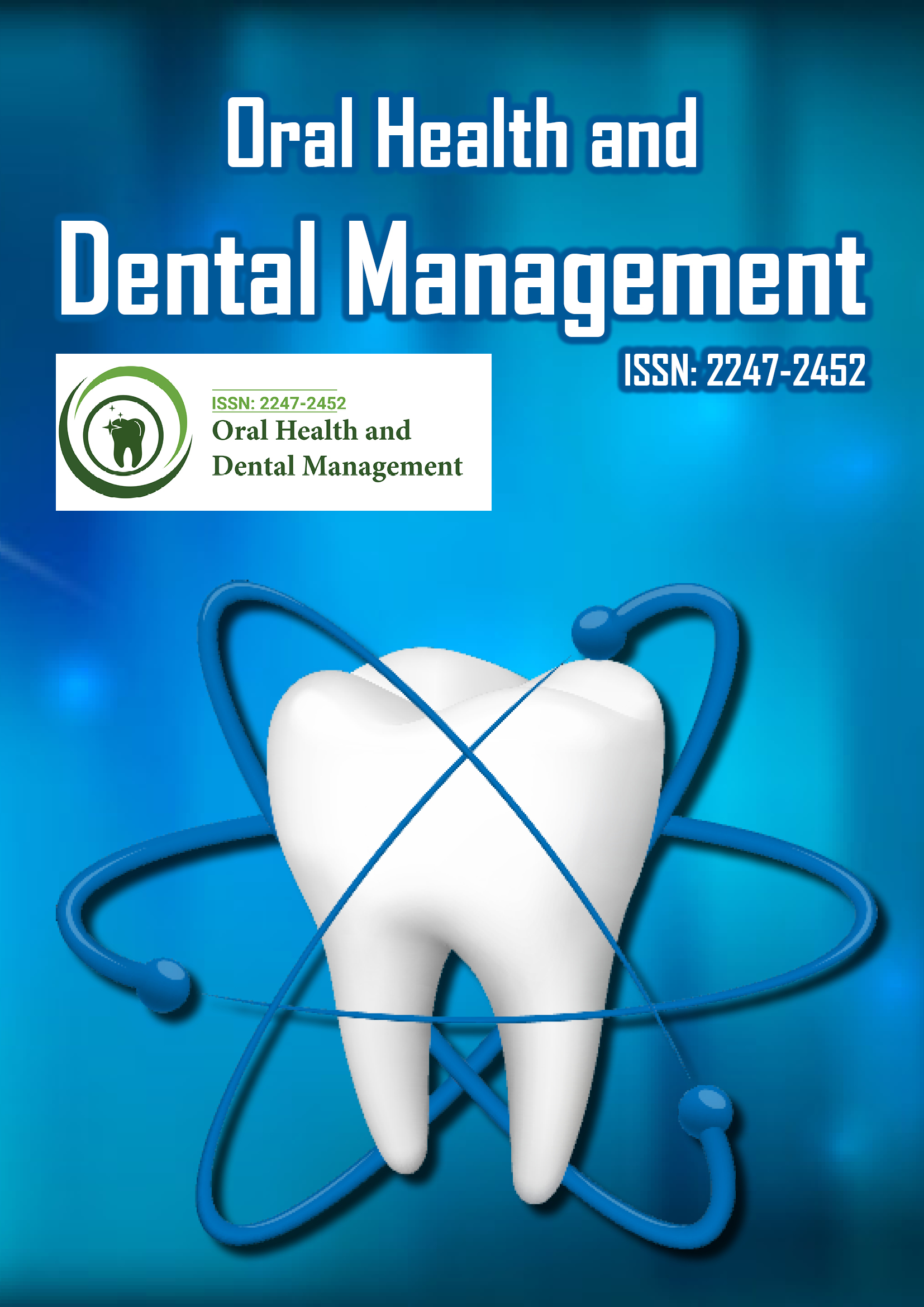Indexed In
- The Global Impact Factor (GIF)
- CiteFactor
- Electronic Journals Library
- RefSeek
- Hamdard University
- EBSCO A-Z
- Virtual Library of Biology (vifabio)
- International committee of medical journals editors (ICMJE)
- Google Scholar
Useful Links
Share This Page
Journal Flyer

Open Access Journals
- Agri and Aquaculture
- Biochemistry
- Bioinformatics & Systems Biology
- Business & Management
- Chemistry
- Clinical Sciences
- Engineering
- Food & Nutrition
- General Science
- Genetics & Molecular Biology
- Immunology & Microbiology
- Medical Sciences
- Neuroscience & Psychology
- Nursing & Health Care
- Pharmaceutical Sciences
Opinion Article - (2025) Volume 24, Issue 2
Addressing Tooth Sensitivity: Causes and Solutions
Lucas Bennett*Received: 26-May-2025, Manuscript No. OHDM-25-29960; Editor assigned: 28-May-2025, Pre QC No. OHDM-25-29960; Reviewed: 11-Jun-2025, QC No. OHDM-25-29960; Revised: 18-Jun-2025, Manuscript No. OHDM-25-29960; Published: 25-Jun-2025, DOI: 10.35248/2247-2452.25.24.1142
Abstract
Description
Tooth sensitivity is a common complaint that can affect people of all ages. It is characterized by discomfort or sharp pain in response to stimuli such as hot, cold, sweet, or acidic foods and drinks. This condition can interfere with eating and oral care routines, impacting quality of life if left unmanaged.
The cause of tooth sensitivity often lies in the exposure of the inner tooth structures. Teeth are covered by enamel, a hard, protective layer, and below that lies dentin, which contains microscopic tubules that lead to nerve endings. When enamel is worn away or gums recede, these tubules become exposed, allowing external stimuli to reach the nerves and cause pain.
Common factors that contribute to enamel wear include aggressive brushing, frequent consumption of acidic foods and beverages, grinding or clenching teeth, and dental procedures that may weaken enamel temporarily. Gum recession, which exposes the root surfaces of teeth, can result from gum disease, improper brushing technique, or aging.
To manage sensitivity, individuals should adopt gentle brushing techniques, using a soft-bristled toothbrush and nonabrasive toothpaste. Avoiding acidic foods and drinks or consuming them with meals helps reduce acid exposure. Using a straw when drinking acidic beverages can also minimize contact with teeth.
Professional care plays an important role in diagnosing the underlying causes of sensitivity. Dental practitioners can apply protective coatings to exposed areas, provide prescription-strength toothpaste, or recommend treatments to strengthen enamel. In some cases, addressing gum recession or correcting bite issues may be necessary.
Home care remedies such as rinsing with fluoride solutions or desensitizing mouthwashes can also provide relief by blocking nerve responses. Maintaining good oral hygiene is essential to prevent decay or gum disease, which can worsen sensitivity.
It is important to differentiate sensitivity from more serious conditions like tooth decay or infection, which may require different treatments. Persistent or severe pain should always be evaluated by a dental professional to rule out underlying problems.
When caries lesions progress to cavitation, restorative treatment becomes necessary. The most common approach involves removing the decayed tissue and restoring the tooth with materials such as composite resin, amalgam, glass ionomer cement, or ceramics. Advances in dental materials and techniques have improved the durability and aesthetics of restorations. In cases where decay reaches the pulp, root canal therapy may be needed to remove the infected tissue and save the tooth. Severe cases might require extraction.
Preventing dental caries involves a combination of personal, professional, and public health measures. Daily oral hygiene practices such as brushing teeth twice a day with fluoride toothpaste and flossing are fundamental. Fluoride is crucial because it enhances enamel resistance to acid attack, promotes remineralization, and inhibits bacterial activity. Community water fluoridation has been one of the most effective public health interventions to reduce caries prevalence globally.
Conclusion
Education about sensitivity, including triggers and prevention, empowers individuals to manage their condition effectively. Combining home care strategies with professional guidance ensures the best outcomes. Tooth sensitivity results from exposed inner tooth structures and can be controlled through careful daily habits, professional treatments, and lifestyle changes. Awareness and timely action help maintain comfort and protect long-term dental health. Lifestyle factors such as quitting tobacco and reducing alcohol intake benefit overall oral health and can reduce sensitivity by promoting healthier gums and stronger teeth. Proper hydration supports saliva production, which helps protect teeth naturally.
Citation: Bennett L (2025). Addressing Tooth Sensitivity: Causes and Solutions. Oral Health Dent Manage. 24:1141.
Copyright: © 2025 Bennett L. This is an open-access article distributed under the terms of the Creative Commons Attribution License, which permits unrestricted use, distribution and reproduction in any medium, provided the original author and source are credited.
